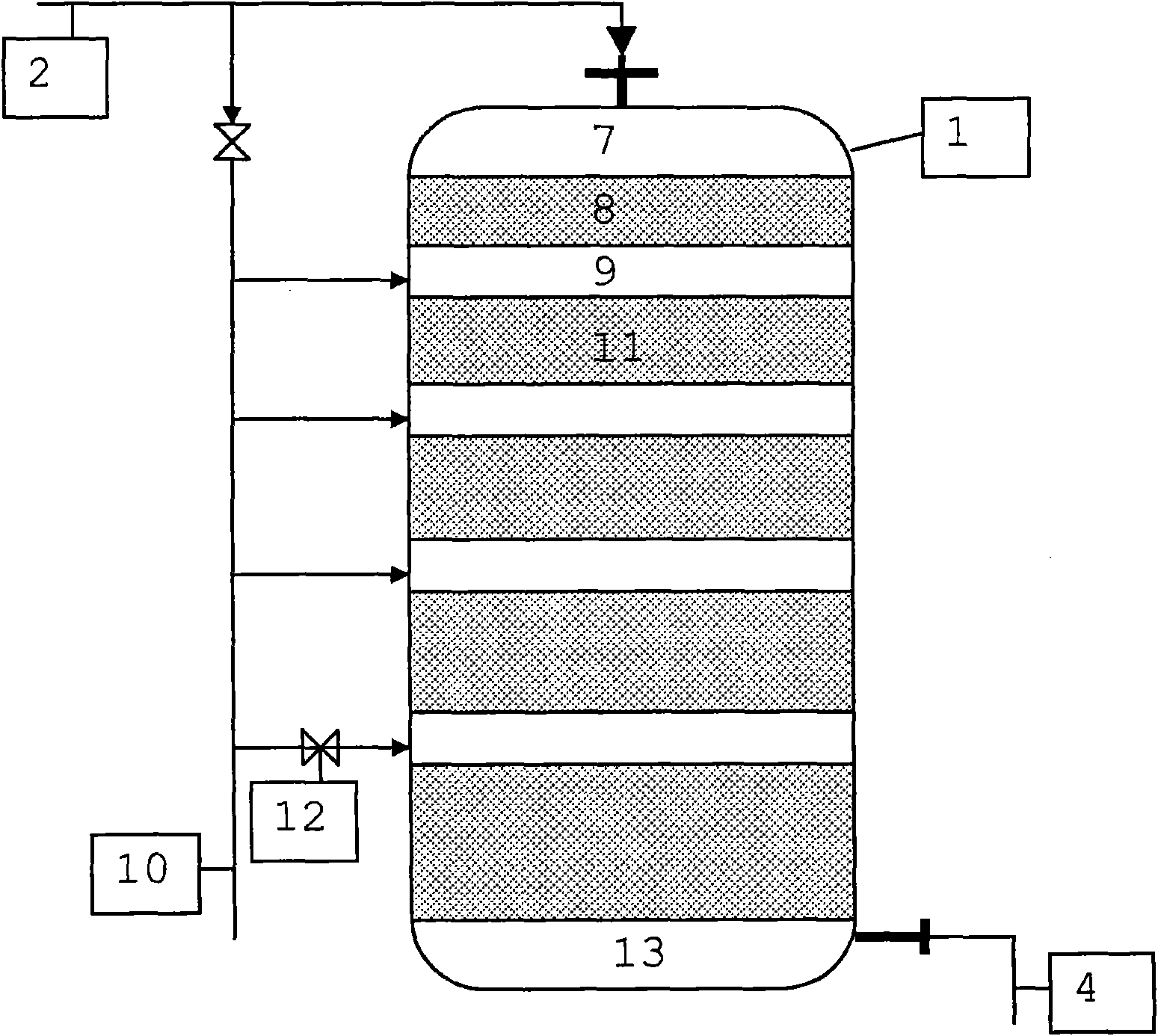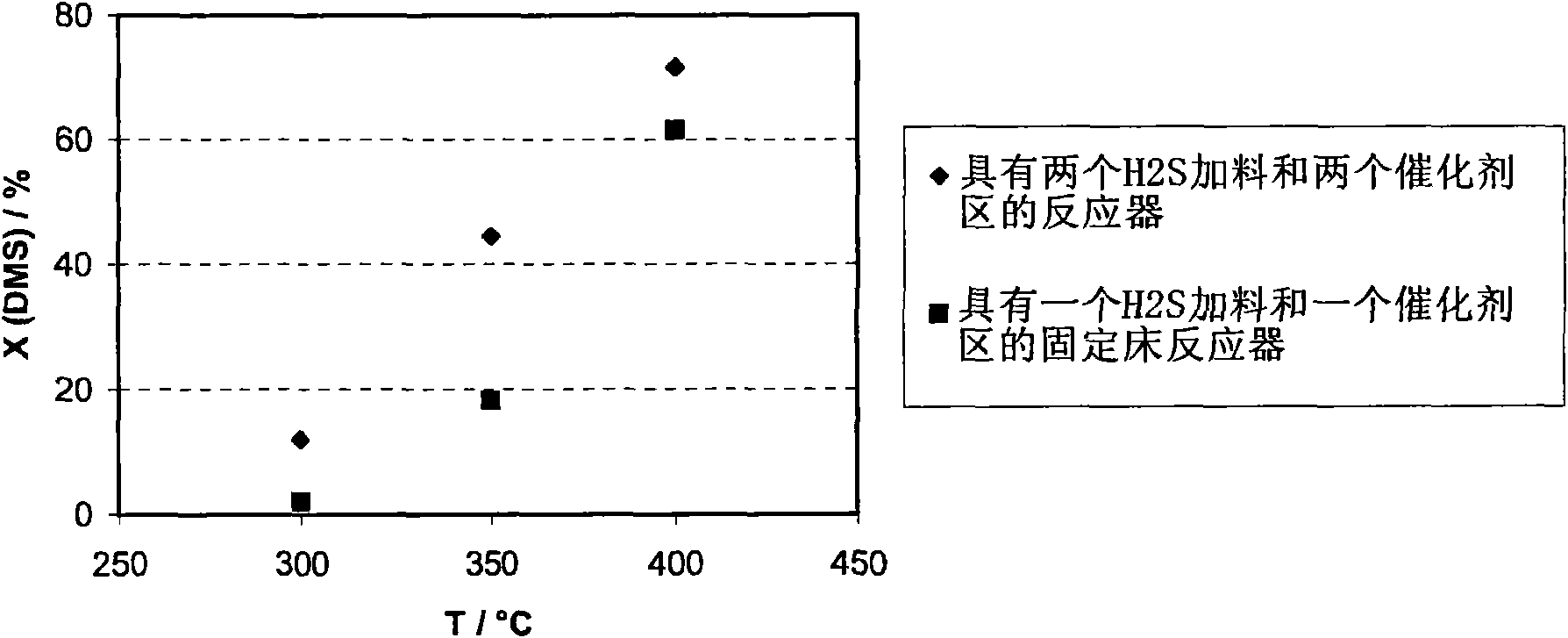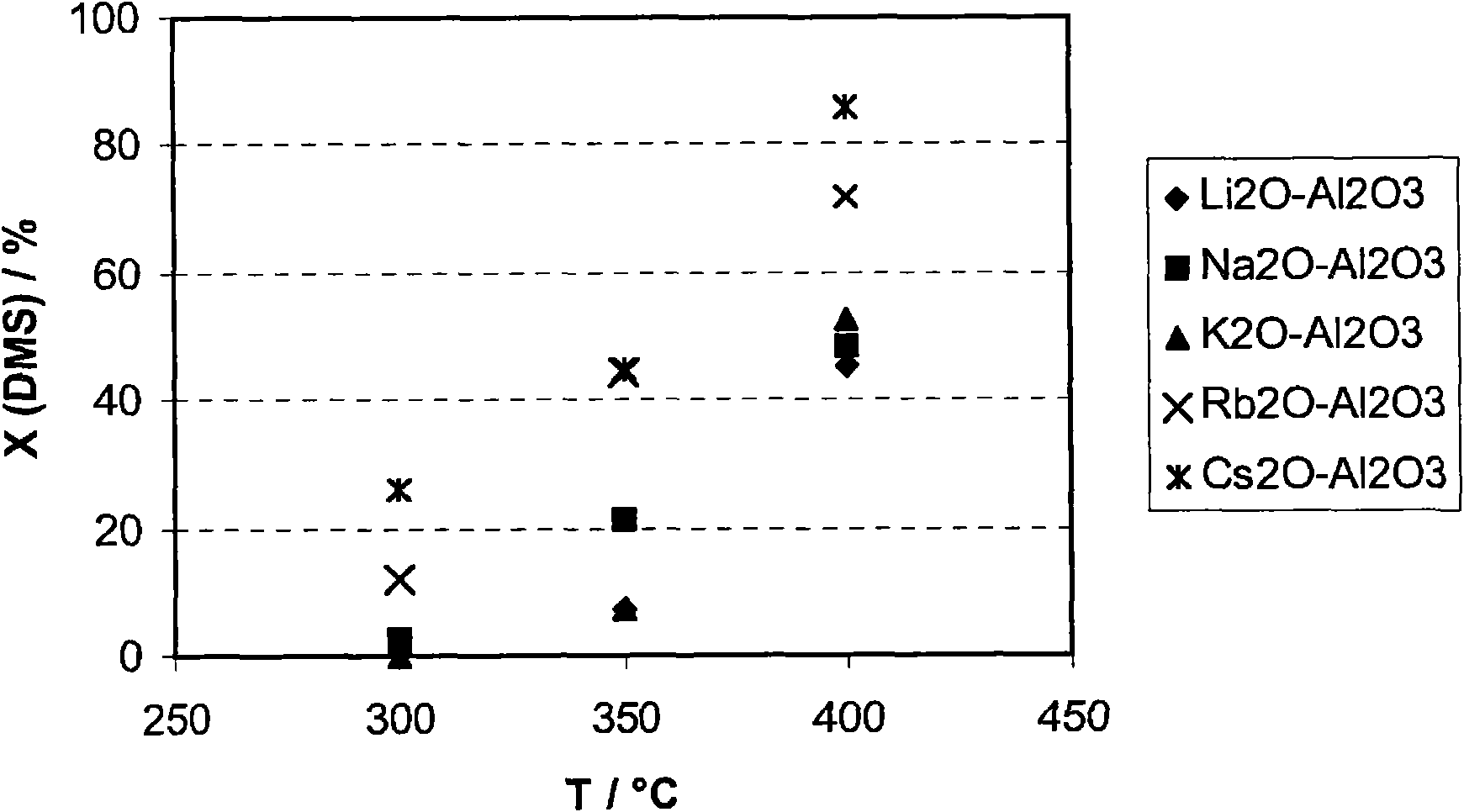Method for producing methyl mercaptan from dialkyl sulfides and dialkyl polysulfides
A technology of dialkyl sulfide and polysulfide, which can be used in the preparation of mercaptans, organic chemistry, etc., and can solve problems such as toxicity
- Summary
- Abstract
- Description
- Claims
- Application Information
AI Technical Summary
Problems solved by technology
Method used
Image
Examples
Embodiment 1
[0034] Example 1 shows by way of example the synthesis of the catalyst, while Example 2 describes the catalytic cleavage of dimethyl sulfide to methyl mercaptan.
[0035] Example 1: M 2 O-Al 2 o 3 Preparation of (M=Li, Na, K, Rb, Cs)
[0036] 49.66g of LiNO 3 Dissolve in 30ml of distilled water. The solution was heated to about 60°C so that the salt could be completely dissolved. 50 g of gamma-alumina was added to the solution with stirring. The solution was then stirred for about 60 minutes. The catalyst is stirred at a temperature of at least 60°C, optionally under reduced pressure, until all the liquid is absorbed into the support. The catalyst was dried overnight in air at about 120°C and then calcined at 500°C for 3 hours in a stream of air.
Embodiment 2
[0038] DMS cracking was studied at a temperature range of 100-500°C and a pressure of 1.5-25 bar. The ratio of hydrogen sulfide to dimethyl sulfide (DMS) in the reaction gas is in the range of 1:1-25:1.
[0039] The fresh catalyst was first sulfided in the reactor at 350° C. for 2.5 hours in a stream of hydrogen sulfide before starting the reaction. figure 2 shows that for Rb 2 O-Al 2 o 3 (spheralite), with classical "top feeding" (fixed bed reactor with one catalyst zone) and in "two-zone operation" (i.e., similar to that with H 2 S stage reactor with intermediate feed, H 2 S streams are fed upstream of the two catalyst zones) Comparison of the cracking conversion of dimethyl sulfide to methyl mercaptan as a function of temperature for the two cases. In both cases, the total H 2 The ratio of S to DMS was 14:1. The space velocity and gas loading are the same in both cases. figure 2 Illustrated, in the apparatus of the present invention, by the catalysts modified with...
PUM
| Property | Measurement | Unit |
|---|---|---|
| conversion efficiency | aaaaa | aaaaa |
| conversion efficiency | aaaaa | aaaaa |
| conversion efficiency | aaaaa | aaaaa |
Abstract
Description
Claims
Application Information
 Login to View More
Login to View More - R&D
- Intellectual Property
- Life Sciences
- Materials
- Tech Scout
- Unparalleled Data Quality
- Higher Quality Content
- 60% Fewer Hallucinations
Browse by: Latest US Patents, China's latest patents, Technical Efficacy Thesaurus, Application Domain, Technology Topic, Popular Technical Reports.
© 2025 PatSnap. All rights reserved.Legal|Privacy policy|Modern Slavery Act Transparency Statement|Sitemap|About US| Contact US: help@patsnap.com



